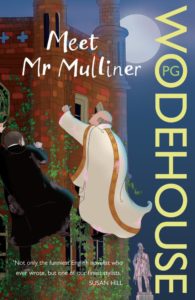
Since my last foray into the world of Wooster and Jeeves I’ve found a few more stacks of Wodehouse books, increasing my library by nearly a dozen books. While not ideally suited to binge reading, I’ve read a couple more Wooster books, and a pair featuring the tales by a certain Mr. Mulliner, as related to a rapt audience in a local pub. (The fact that my compute attempts to auto-correct the name to Milliner is a sad testament to computer illiteracy.)
The two Mulliner books that I’ve read so far are both collections of short stories, each a tale of some hapless nephew, or cousin, or other relative of Mr. Mulliner’s. Nearly each story tells of a young(-ish) lad falling in love, his travails and eventual triumph. The stories are islands in time, so ideally suited for PBS costume dramas set in England between the wars, although likely some were written after WWII. They tell of a time when young men were gentlemen, often of leisure, with butlers and other people to take care of vital needs. Back then people belonged to various clubs, Great Britain still had traditions, and public school chums were chums for life. Some of the characters that appear in the Wooster and Jeeves books appear in these stories, so they exist in the same fictional universe.
Some of those things are obvious inventions, but I found it jarring to read a throw-away line about a tuck-shop, since that’s the term we used for such a place back when I went to school in Lusaka, Zambia, in the 1970s and 1980s. Some British traditions and nomenclature spans decades. This fact sounds trivial, but the reach of the British Empire stretched far across the world in untold ways. Does the tuck-shop still exist in places today?
While not every Mulliner story amuses on the same scale, and they tend to follow for the most part a certain formula, the ones that are good are dashed good, in Wodehousian terms. They’re maybe not Jeeves and Wooster good, but the best ones rise almost to that level.